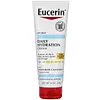What's inside
What's inside
 Key Ingredients
Key Ingredients

No key ingredients
 Benefits
Benefits

 Concerns
Concerns

 Ingredients Side-by-side
Ingredients Side-by-side

Water
Skin ConditioningGlycerin
HumectantTapioca Starch
Butylene Glycol
HumectantCetyl Alcohol
EmollientHydrogenated Coco-Glycerides
EmollientMyristyl Myristate
EmollientStearyl Alcohol
EmollientPalmitic Acid
EmollientGlyceryl Stearate
EmollientStearic Acid
CleansingGlycyrrhiza Inflata Root Extract
Skin ConditioningDimethicone
Emollient1,2-Hexanediol
Skin ConditioningPhenoxyethanol
PreservativeSilica Dimethyl Silylate
EmollientDecylene Glycol
Skin ConditioningAcrylates/C10-30 Alkyl Acrylate Crosspolymer
Emulsion StabilisingBenzyl Alcohol
PerfumingXanthan Gum
EmulsifyingSodium Hydroxide
BufferingTrisodium EDTA
Water, Glycerin, Tapioca Starch, Butylene Glycol, Cetyl Alcohol, Hydrogenated Coco-Glycerides, Myristyl Myristate, Stearyl Alcohol, Palmitic Acid, Glyceryl Stearate, Stearic Acid, Glycyrrhiza Inflata Root Extract, Dimethicone, 1,2-Hexanediol, Phenoxyethanol, Silica Dimethyl Silylate, Decylene Glycol, Acrylates/C10-30 Alkyl Acrylate Crosspolymer, Benzyl Alcohol, Xanthan Gum, Sodium Hydroxide, Trisodium EDTA
Water
Skin ConditioningGlycerin
HumectantUrea
BufferingCetearyl Alcohol
EmollientHydrogenated Coco-Glycerides
EmollientOctyldodecanol
EmollientCaprylic/Capric Triglyceride
MaskingButyrospermum Parkii Butter
Skin ConditioningSodium Lactate
BufferingGlyceryl Stearate Se
EmulsifyingCeramide NP
Skin ConditioningLactic Acid
BufferingArginine Hcl
Skin ConditioningGlycine
BufferingAlanine
MaskingCarnitine
CleansingSodium PCA
HumectantCarrageenan
Cholesterol
EmollientHelianthus Annuus Seed Oil
EmollientTapioca Starch
Dimethicone
EmollientPentylene Glycol
Skin ConditioningPhenoxyethanol
PreservativeDecylene Glycol
Skin ConditioningAcrylates/C10-30 Alkyl Acrylate Crosspolymer
Emulsion StabilisingSodium Cetearyl Sulfate
CleansingSodium Chloride
MaskingWater, Glycerin, Urea, Cetearyl Alcohol, Hydrogenated Coco-Glycerides, Octyldodecanol, Caprylic/Capric Triglyceride, Butyrospermum Parkii Butter, Sodium Lactate, Glyceryl Stearate Se, Ceramide NP, Lactic Acid, Arginine Hcl, Glycine, Alanine, Carnitine, Sodium PCA, Carrageenan, Cholesterol, Helianthus Annuus Seed Oil, Tapioca Starch, Dimethicone, Pentylene Glycol, Phenoxyethanol, Decylene Glycol, Acrylates/C10-30 Alkyl Acrylate Crosspolymer, Sodium Cetearyl Sulfate, Sodium Chloride
 Reviews
Reviews

Ingredients Explained
These ingredients are found in both products.
Ingredients higher up in an ingredient list are typically present in a larger amount.
Acrylates/C10-30 Alkyl Acrylate Crosspolymer is a synthetic polymer. It is used to thicken and improve the texture of products. Due to its properties, it can prevent water and oil ingredients from separating.
We don't have a description for Decylene Glycol yet.
Dimethicone is a type of synthetic silicone created from natural materials such as quartz.
What it does:
Dimethicone comes in different viscosities:
Depending on the viscosity, dimethicone has different properties.
Ingredients lists don't always show which type is used, so we recommend reaching out to the brand if you have questions about the viscosity.
This ingredient is unlikely to cause irritation because it does not get absorbed into skin. However, people with silicone allergies should be careful about using this ingredient.
Note: Dimethicone may contribute to pilling. This is because it is not oil or water soluble, so pilling may occur when layered with products. When mixed with heavy oils in a formula, the outcome is also quite greasy.
Learn more about DimethiconeGlycerin is already naturally found in your skin. It helps moisturize and protect your skin.
A study from 2016 found glycerin to be more effective as a humectant than AHAs and hyaluronic acid.
As a humectant, it helps the skin stay hydrated by pulling moisture to your skin. The low molecular weight of glycerin allows it to pull moisture into the deeper layers of your skin.
Hydrated skin improves your skin barrier; Your skin barrier helps protect against irritants and bacteria.
Glycerin has also been found to have antimicrobial and antiviral properties. Due to these properties, glycerin is often used in wound and burn treatments.
In cosmetics, glycerin is usually derived from plants such as soybean or palm. However, it can also be sourced from animals, such as tallow or animal fat.
This ingredient is organic, colorless, odorless, and non-toxic.
Glycerin is the name for this ingredient in American English. British English uses Glycerol/Glycerine.
Learn more about GlycerinHydrogenated Coco-Glycerides isn't fungal acne safe.
Phenoxyethanol is a preservative that has germicide, antimicrobial, and aromatic properties. Studies show that phenoxyethanol can prevent microbial growth. By itself, it has a scent that is similar to that of a rose.
It's often used in formulations along with Caprylyl Glycol to preserve the shelf life of products.
Tapioca starch is a thickening agent and is made from the cassava root, also known as yucca.
According to a manufacturer, it is an excellent talc replacement.
It is gluten-free.
Learn more about Tapioca StarchWater. It's the most common cosmetic ingredient of all. You'll usually see it at the top of ingredient lists, meaning that it makes up the largest part of the product.
So why is it so popular? Water most often acts as a solvent - this means that it helps dissolve other ingredients into the formulation.
You'll also recognize water as that liquid we all need to stay alive. If you see this, drink a glass of water. Stay hydrated!
Learn more about Water